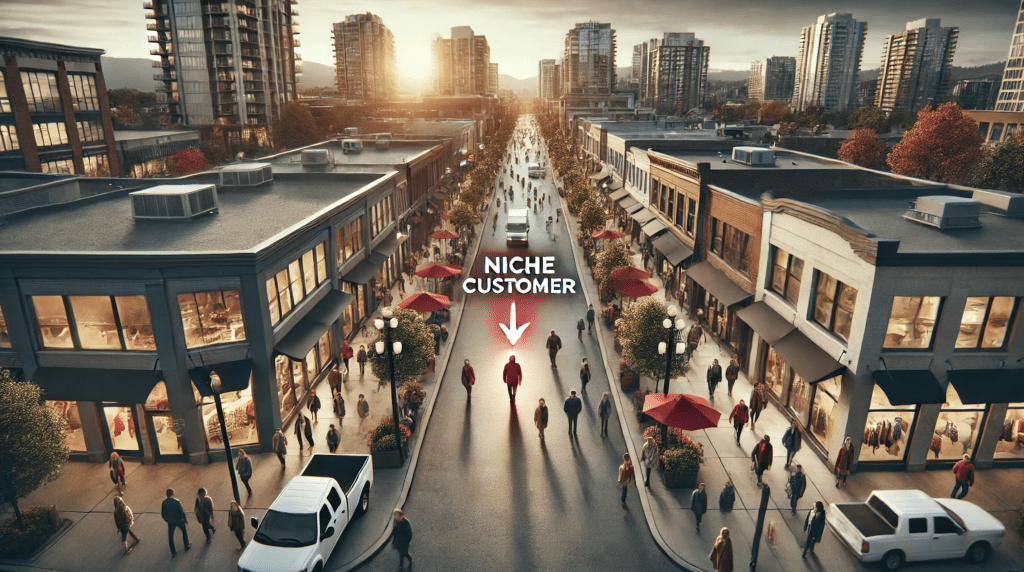In today’s saturated business landscape, it’s increasingly challenging for local companies in Abbotsford and the Fraser Valley to attract new customers and stand out. Traditional digital marketing methods often fall short in highly competitive markets where businesses are vying for visibility and customer attention. To break through the noise, innovative approaches—like Google’s Bidding Exploration, an AI-powered tool that targets untapped search traffic, combined with memorable, quirky graphic design—can uncover valuable customer segments, improve conversion rates, and foster distinct brand identity.
This strategy requires both technical insight and creative daring. While Google’s Bidding Exploration can identify hidden traffic sources, quirky and unconventional design captures attention and reinforces a brand’s uniqueness. Together, these techniques help businesses identify “niches within niches” and access valuable audience segments that other brands may overlook. Let’s explore how these approaches work and how Abbotsford and Fraser Valley businesses can integrate them to find new customers and unlock growth.
Understanding Crowded Markets and the Challenges for Local Businesses
Crowded markets present unique challenges for local businesses, especially in highly competitive regions where many brands offer similar products and services. Here’s why competition in these markets is so intense:
- High Visibility Saturation: Popular keywords and market segments are often dominated by established brands, making it difficult for smaller businesses to achieve visibility.
- Consumer Overload: Potential customers are constantly bombarded with similar messages, reducing the likelihood of engagement and making it harder to stand out.
- Price Sensitivity and Brand Loyalty: Many consumers in competitive markets have existing brand loyalties or are highly price-conscious, limiting the success of traditional promotional tactics.
Local business owners must look beyond the conventional to achieve sustainable growth. The answer often lies in targeting niche areas that competitors have overlooked—segments in the “weeds” of the market where customer intent, psychology, and interests align with unique brand messaging.
Finding Value in the Overlooked: Exploring the “Weeds” of the Market
Crowded markets are not without opportunity. There is immense value in exploring the gaps where mainstream marketing overlooks potential customers. This approach leverages:
- User Intent and Psychology: Not all customers in a market want the same thing; user intent varies widely. While some are ready to make a purchase, others are browsing, researching, or simply curious. Recognizing these diverse intents and targeting them uniquely can uncover new customer pools.
- Linguistic and Cultural Nuances: In multilingual and culturally rich regions like British Columbia, there are unique opportunities to target audiences with language-specific or culturally nuanced messaging that others may ignore.
- Niche Interests and Micro-Segments: Within a broad customer base, there are likely subgroups with distinct needs. These groups are often less catered to by big competitors, making them ideal targets for businesses willing to tailor their messaging.
Google’s Bidding Exploration feature enables marketers to discover these hidden segments by leveraging AI to uncover under-utilized keywords and user search patterns that reflect varied intents and interests.
Unpacking Google’s Bidding Exploration: A Game-Changing Tool for Search Campaigns
Google’s Bidding Exploration feature, currently in beta, is a powerful new tool designed to help advertisers identify untapped traffic sources by exploring lesser-known but valuable search terms. This tool is especially effective for campaigns utilizing the Target Return on Ad Spend (tROAS) strategy. Here’s how Bidding Exploration works:
- AI-Powered Traffic Diversification: Bidding Exploration uses AI to expand keyword targeting into “low-traffic” search categories, enhancing the diversity of traffic by tapping into underutilized search queries.
- Unique Search Categories: These are user intents that differ significantly from mainstream terms but still align with a campaign’s objectives. They can include niche keywords, linguistic variations, or intent-based phrases.
- Reduced ROAS Threshold: Bidding Exploration works by adjusting the target ROAS (Return on Ad Spend) tolerance by up to 10%, which enables more flexible bidding on lesser-known terms without compromising overall performance.
- Unconstrained Budget Requirement: For this feature to work optimally, the campaign budget should not be limited, allowing the AI to freely explore new keyword spaces.
- Technical Note: If a campaign is budget-constrained, Google may disable Bidding Exploration temporarily to avoid wasted spend. It’s crucial to allocate an appropriate budget to allow this tool to function effectively.
- Incremental Impact Measurement: Bidding Exploration is designed to be tested and measured. Google recommends:
- Running Experiments: Conducting campaign experiments by isolating Bidding Exploration’s effect can reveal incremental improvements in cost, conversions, and traffic diversity.
- Bid Strategy Reporting: Through bid strategy reports, businesses can track new traffic diversity metrics, helping them evaluate the true effectiveness of these campaigns in uncovering hidden segments.
For local businesses in Abbotsford and Fraser Valley, Bidding Exploration represents an opportunity to broaden reach without simply targeting the “low-hanging fruit” already monopolized by bigger players. By finding customers who fall outside the usual search patterns, businesses can attract valuable, untapped leads.
Capturing Attention with Quirky, Unconventional Graphic Design
Once a business identifies niche traffic sources, it’s essential to capture these customers’ attention and convert them with a memorable brand experience. Quirky, unconventional graphic design can be an effective strategy here, as it cuts through the noise of conventional advertising. Here’s how it works:
- Unexpected Calls to Action (CTAs): Traditional CTAs, like “Click Here” or “Buy Now,” are often overlooked by users accustomed to them. A quirky CTA, such as “Don’t Click Here” or “Only for the Curious,” creates intrigue, prompting users to engage out of curiosity.
- Visual Questions and Engagement: Designs that ask open-ended questions or use bold visuals can draw users into the brand narrative, prompting them to investigate further.
- Subtle Product Emphasis: Rather than explicitly promoting a product or service, quirky designs can focus on utility, emotion, or lifestyle aspects that align with the audience’s needs.
- Example: A design promoting a coffee shop might showcase the energy, warmth, or relaxation associated with a coffee break, without directly mentioning coffee, inviting users to make the connection themselves.
For local businesses, these design choices can create a memorable experience that resonates with niche audiences. Combined with Bidding Exploration, quirky design helps reinforce the brand identity and maximizes engagement from new, often under-targeted customer segments.
The Role of Experimentation and Testing
Experimentation is vital in implementing these strategies successfully. By dedicating 25-50% of marketing time and budget to trial and error, local businesses can discover what works best for niche segments, adjust for maximum impact, and refine their approach. Here’s how to structure this:
- A/B Testing with Bidding Exploration: Testing various keyword and targeting settings within Bidding Exploration can reveal which configurations yield the best ROI without disrupting primary campaigns.
- Isolated Design Tests: Test different versions of quirky, experimental designs with small portions of the target audience to gauge interest and engagement levels before full deployment.
- Adjusting Based on Analytics: Using Google’s bid strategy reports, businesses can fine-tune their approach based on metrics like traffic diversity and conversion impact, enabling more data-driven decisions for sustainable growth.
Over time, these tests reveal effective combinations, helping businesses develop a finely tuned, niche-within-a-niche strategy that drives higher engagement and conversion rates.
Building Long-Term Success with a Niche-Within-a-Niche Strategy
The fusion of Google’s Bidding Exploration and unconventional design tactics supports a unique “niche-within-a-niche” approach. This involves:
- Personalized Marketing Targeting: By segmenting audiences down to their specific intents, businesses can craft highly relevant campaigns that resonate on a personal level.
- Distinctive Brand Positioning: Quirky design reinforces a memorable brand experience, aligning with niche audiences who value creativity and individuality.
- Sustained Engagement and Conversion: Targeting lesser-known traffic sources with a unique brand voice encourages customer loyalty and strengthens engagement.
Through this tailored strategy, local businesses can compete effectively, even in highly competitive markets. The ability to reach underserved customers and capture their interest with memorable design elevates brand presence and drives long-term value.
Uncovering Growth in Unexpected Places
In today’s crowded markets, achieving growth requires more than just traditional tactics; it demands innovation and a willingness to explore beyond the status quo. By leveraging Google’s Bidding Exploration feature, Abbotsford and Fraser Valley businesses can access overlooked customer segments, while unconventional, quirky graphic design allows them to capture attention and foster brand loyalty.
Together, these approaches create a powerful strategy that not only helps local businesses compete in saturated markets but also allows them to discover hidden opportunities, build lasting relationships, and unlock untapped revenue potential.





















